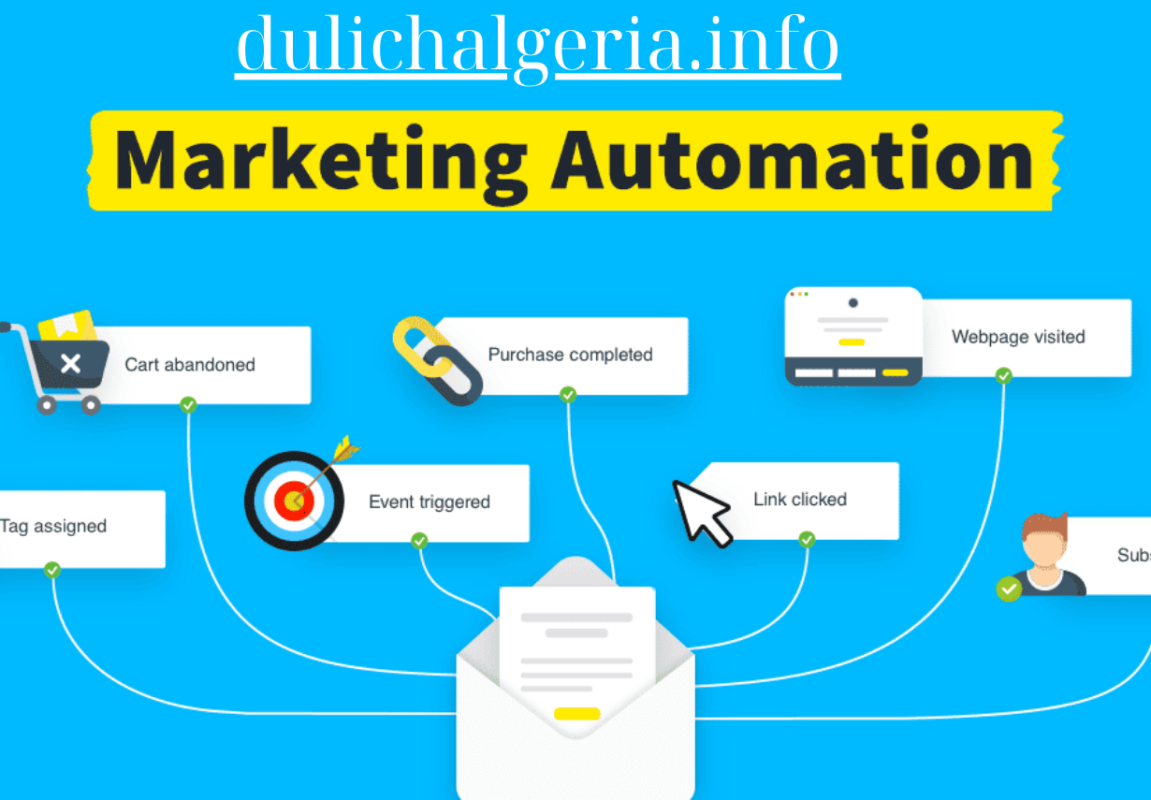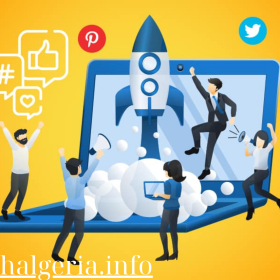In today’s hyper-connected digital landscape, businesses need to engage customers across multiple touchpoints, from email and social media to mobile and web. However, managing marketing efforts on different platforms can become overwhelming without the right tools. That’s where multi-channel marketing automation comes in. By integrating and automating marketing across various platforms, you can deliver consistent messaging, improve engagement, and streamline your marketing efforts for better results. In this guide, we’ll explore how you can harness the power of multi-channel marketing automation to elevate your brand.
1. What is Multi-Channel Marketing Automation?
Multi-channel marketing automation refers to the process of using automation tools to manage marketing campaigns across multiple platforms—including email, social media, SMS, web, and more—from a central hub. With automation, you can trigger personalized messages, coordinate marketing activities, and ensure that your brand’s messaging remains consistent across all channels.
Key Benefits of Multi-Channel Marketing Automation:
- Consistent Messaging: Automated marketing tools ensure that the messaging remains uniform and aligned across different platforms, helping build a strong brand presence.
- Streamlined Operations: By automating repetitive tasks, such as email campaigns, social posts, and customer follow-ups, marketers can focus on strategy and optimization.
- Better Customer Engagement: Automated tools can segment audiences, personalize content, and deliver messages at the right time, improving customer engagement across multiple channels.
- Increased ROI: Integrated marketing automation helps maximize the efficiency of campaigns, leading to better results and higher returns on investment (ROI).
Pro tip: Multi-channel automation allows you to meet customers where they are—whether that’s on social media, through email, or via SMS—ensuring a seamless, omnichannel experience.
2. Key Channels to Include in Multi-Channel Marketing Automation
To successfully execute a multi-channel marketing strategy, it’s essential to integrate key platforms that your audience interacts with. Here are the primary channels you should consider automating for a cohesive customer experience:
1. Email Marketing
- Email automation remains one of the most powerful tools for nurturing leads, delivering personalized content, and re-engaging customers. With automation, you can set up drip campaigns, transactional emails, and even triggered emails based on user behavior (e.g., cart abandonment).
2. Social Media Marketing
- Automating your social media campaigns across platforms like Facebook, Instagram, LinkedIn, and Twitter ensures that your brand stays active and visible. You can schedule posts, monitor engagement, and create personalized social ads targeted to specific audience segments.
3. SMS and Mobile Marketing
- SMS automation allows you to send timely text messages, such as promotions, reminders, or alerts, directly to customers’ mobile devices. You can also automate push notifications for mobile apps, helping drive engagement and conversions.
4. Web Personalization
- Use automation to personalize the on-site experience for visitors. For example, show customized content or product recommendations based on user behavior, such as previously viewed items or recent purchases. Automated web pop-ups and personalized landing pages can also drive conversions.
5. Paid Advertising (PPC)
- Integrating PPC automation allows you to create ads across platforms like Google Ads or Facebook Ads, automatically adjusting bids, budgets, and targeting based on performance. This ensures you’re delivering ads to the right audience at the right time without constant manual adjustments.
Pro tip: Ensure all these channels are synced within your automation platform for a truly integrated marketing experience, giving you a 360-degree view of your customer’s journey.
3. How to Integrate Multi-Channel Marketing Automation for Consistent Messaging
For effective multi-channel marketing, integrating automation tools is key. Here’s how you can bring different platforms together for consistent messaging:
1. Choose an All-in-One Marketing Automation Platform
- The first step to automating your multi-channel marketing is selecting the right marketing automation platform that can handle all your desired channels. Look for platforms like HubSpot, Marketo, ActiveCampaign, or Salesforce that allow you to manage emails, social media, SMS, and web personalization from a single dashboard.
2. Set Up Cross-Channel Workflows
- Build cross-channel workflows that automate the entire customer journey. For example, you can set up a workflow where a customer who signs up for your newsletter receives an automated welcome email, followed by a targeted social ad and an SMS reminder about an upcoming sale. This ensures that no matter where the customer interacts with your brand, the messaging remains consistent.
3. Segment Your Audience for Personalization
- Audience segmentation is crucial for delivering personalized content across multiple channels. Use data such as customer behavior, demographics, or purchase history to create targeted segments. Automation tools allow you to send personalized emails, social ads, and even SMS messages tailored to each audience segment.
4. Use Dynamic Content for Real-Time Personalization
- Dynamic content automatically adapts to the recipient based on their preferences, behaviors, or actions. For example, an email might feature different product recommendations based on what the user has previously browsed, or your website can show personalized banners based on a user’s location or purchase history.
5. Maintain Brand Consistency
- As you automate your marketing across various platforms, it’s crucial to maintain consistent branding. Ensure that your tone, voice, visual elements, and messaging align across every channel, so customers have a seamless experience with your brand, regardless of where they interact with it.
Pro tip: Automation should enhance personalization, not hinder it. Be sure to review automated content regularly to ensure it remains relevant and aligned with customer needs and preferences.
4. Best Practices for Multi-Channel Marketing Automation
To maximize the impact of multi-channel marketing automation, follow these best practices:
1. Map the Customer Journey
- Start by understanding your customer’s journey from awareness to conversion and beyond. Identify key touchpoints and determine how different channels fit into this journey. Use automation to ensure the customer receives consistent messaging and timely communication throughout the entire process.
2. Test and Optimize Campaigns
- One of the benefits of automation is the ability to test and optimize your campaigns in real-time. Use A/B testing to compare different messaging, timing, and formats across channels to see what resonates best with your audience. Continuously optimize your workflows based on performance data.
3. Focus on Timely and Relevant Communication
- With multi-channel automation, timing is everything. Send messages at the optimal time for each channel to maximize engagement. For example, schedule emails to go out when users are most likely to check their inboxes, or send SMS reminders about limited-time offers just before the promotion ends.
4. Track and Measure Cross-Channel Performance
- Make sure to monitor the performance of each channel through detailed analytics. Look at engagement metrics such as open rates, click-through rates, conversions, and revenue. Evaluate how different channels contribute to your overall marketing goals and adjust your strategy as needed.
5. Ensure Compliance
- Automation makes it easy to manage large-scale campaigns, but you need to ensure that your messaging complies with regulations like GDPR, CAN-SPAM, and CCPA. Always offer clear opt-in/opt-out options and respect user privacy when automating communication.
Pro tip: Establish a feedback loop by gathering data from each touchpoint. This will help you understand the entire customer journey and allow you to tweak your messaging and strategies based on real-world results.
5. How Multi-Channel Marketing Automation Improves Customer Experience
At the heart of multi-channel marketing automation is the ability to deliver a unified, seamless experience to your customers, no matter which platform they use. Here’s how it can significantly improve the customer experience:
1. Personalization at Scale
- Automation enables you to deliver personalized content and offers to customers based on their individual preferences and behavior. Whether it’s a personalized email, a retargeted ad, or a tailored web experience, multi-channel automation allows you to scale personalization across thousands of users.
2. Consistency Across Channels
- Customers expect a consistent brand experience, whether they’re receiving an email, browsing your website, or seeing an ad on social media. Automation ensures that your messaging, branding, and tone are uniform across all channels, fostering trust and familiarity with your brand.
3. Faster Response Times
- Automated workflows ensure that customers receive timely responses, whether they’re signing up for a newsletter, downloading a guide, or completing a purchase. For example, you can set up instant email triggers to thank customers for their purchase or follow up with cart abandonment reminders within minutes of them leaving your site.
4. Predictive and Proactive Engagement
- With the help of AI-powered automation, you can predict customer behavior and proactively engage them with relevant offers or content. For instance, if a customer shows interest in a particular product category, automation can trigger related product recommendations or personalized offers to encourage conversion.
Pro tip: As you enhance the customer experience with automation, don’t lose the human touch. Incorporate personalized messages that make customers feel valued and appreciated at every stage of their journey.
Conclusion
Multi-channel marketing automation offers a game-changing opportunity to streamline your marketing efforts while delivering consistent and personalized messaging across every platform. By integrating and automating channels like email, social media, SMS, and web, you can create a seamless experience for your customers, improve engagement, and increase overall campaign success. With the right strategies and tools in place, you’ll be able to meet your audience where they are and deliver the right message at the right time—every time.


